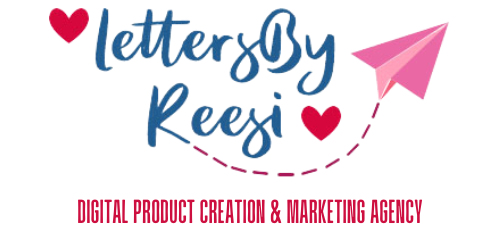I like to look at copywriting to create long-term relationships with my audience. I’ve found that building trust is the cornerstone of lasting customer relationships. Over time, I’ve seen how authentic, trustworthy copy can make all the difference—it influences purchasing decisions, keeps customers coming back, and boosts engagement. When brands focus on genuine, user-centered messaging, it strengthens credibility and forms a real bond with their audience. This guide draws from proven strategies that have helped me build trust through copy, creating a brand presence that feels reliable, relatable, and true to your values. I am so excited to share this with you!
Why Building Trust Matters in Copywriting

Building trust is more than a buzzword; it’s an essential part of successful website copywriting. For potential customers to engage with your website, they need to feel confident that your brand is reliable, transparent, and genuine. Through well-crafted copy, you can effectively build brand trust, encouraging customers to explore, engage, and ultimately convert. Book a date with me and let’s talk about creating high-quality content for your website and platforms.
The Power of Trust in Digital Marketing
Trust is one of the biggest determining factors for customer retention and loyalty. When users visit your website, they assess whether your brand appears dependable and aligned with their needs. Trust-building website copy helps bridge this gap, making users feel secure about doing business with you. By developing trust on your site, you can see increased engagement and conversions.
Key Strategies for Building Trust Through Copy

Crafting trustworthy and compelling copy requires a balance of transparency, clarity, and relatability. Here are proven strategies to incorporate in your website copywriting to build trust with your audience.
1. Use Clear, Transparent Language
One of the most effective ways to build trust is by using clear, straightforward language. Avoid jargon or overly complex phrasing that can confuse or alienate readers. Instead, use simple, easy-to-understand language to explain your offerings and benefits.
Some tips for using transparent language:
- Be Honest About Your Offerings: Avoid over-promising; instead, clearly state what customers can expect.
- Set Realistic Expectations: Ensure your copy accurately reflects what users will receive.
- Use Active Voice: This creates a more direct, personal tone that resonates with readers.
Clear and concise copy not only improves readability but also communicates that you value your customers’ time and experience, helping to build trust.
2. Highlight Social Proof and Testimonials
Social proof, including customer testimonials, case studies, and reviews, can be incredibly effective in building trust through copy. When potential customers see positive experiences shared by others, they’re more likely to trust your brand.
Ways to incorporate social proof in your website’s trusted copy:
- Add Customer Reviews: Display positive customer feedback prominently on your homepage or product pages.
- Share Case Studies: Real-world examples of how your product or service benefited clients can be persuasive.
- Include Certifications and Badges: If applicable, show any industry certifications, awards, or security badges to reassure users.
Social proof demonstrates that others have trusted your brand, reinforcing credibility.
3. Write with Empathy and Relatability
To build trust, your audience needs to feel understood. Writing with empathy and addressing readers’ pain points makes your brand more approachable and relatable. Show that you understand their challenges and genuinely care about providing solutions.
How to incorporate empathy into your copy:
- Address Pain Points Directly: Use language that reflects the struggles your audience faces.
- Offer Real Solutions: Describe how your offerings can help solve their specific issues.
- Use Conversational Tone: Avoid overly formal language; instead, use a conversational style that feels personal and approachable.
When your copy reflects an understanding of your customer’s needs, it makes your brand more appealing and trustworthy.
4. Be Consistent Across All Platforms
Consistency is key when building trust through copy. Your tone, messaging, and brand values should be uniform across all digital channels, from your website to social media. This creates a cohesive experience that reassures users that your brand is reliable and genuine.
Tips for maintaining consistency:
- Define Your Brand Voice: Establish a tone that represents your brand’s personality and maintain it across platforms.
- Ensure Messaging is Aligned: Keep your core messages consistent in all your marketing materials.
- Regularly Update Content: Make sure that information on all channels is current, accurate, and relevant.
A consistent message helps reinforce brand trust and reliability, giving users confidence in your company.
5. Focus on Building Trust on Your Website’s Homepage
Your homepage is often the first touchpoint for new visitors, so it’s essential to make a trustworthy first impression. A welcoming and clear homepage with key trust signals can encourage users to explore further.
Essential elements for building trust on your homepage:
- Clear Value Proposition: Make it immediately clear what your brand offers and why it’s valuable.
- Trust Badges and Certifications: Display logos or badges that signify security or credibility, such as SSL certificates or awards.
- Direct, Compelling CTA: Invite users to take the next step, such as signing up, learning more, or exploring your products, in a way that feels natural and beneficial.
By creating a homepage that fosters trust, you lay a strong foundation for positive user experiences.
6. Provide Useful and Valuable Content
Another effective way to build trust is by offering valuable, informative content that educates your audience. Blogs, articles, and guides can showcase your expertise while providing solutions to users’ questions or problems.
How to create valuable content:
- Share Tips and Advice: Offer insights related to your industry that your audience finds useful.
- Address Common Questions: Answer frequently asked questions directly to save users time.
- Provide Resources: Create downloadable resources, like guides or checklists, that provide additional value.
When users perceive your website as a helpful resource, they’re more likely to trust your brand and return for future interactions. If you need help with your copy, let’s connect.
FAQs on Building Trust Through Copy
- How can I build trust with my website copy?
To build trust with your website copy, focus on clear and transparent language, empathy, social proof, and consistency. Offer valuable content that addresses user needs and conveys authenticity. - Why is building brand trust important?
Building brand trust is essential for customer loyalty, engagement, and conversions. When customers trust your brand, they’re more likely to purchase, return, and recommend your business to others. - What role do testimonials play in building trust?
Testimonials provide social proof, which reassures potential customers by showcasing positive experiences from other customers. Seeing genuine feedback from others can validate their decision to trust and engage with your brand. - How often should I update my website content to maintain trust?
Regularly updating your website content is recommended. Aim to refresh key pages at least once or twice a year and update any outdated information as needed to ensure accuracy and relevance.
Conclusion: Build Trust, Build Success
Building trust through copy isn’t just about what you say but how you say it. By focusing on transparent language, social proof, empathy, consistency, and valuable content, you can create a reliable brand presence that resonates with your audience. Building trust is a continuous process that, when done right, can lead to higher engagement, conversions, and customer loyalty.
Take advantage of our copywriting services to transform your website into a trust-building asset. Learn more.







